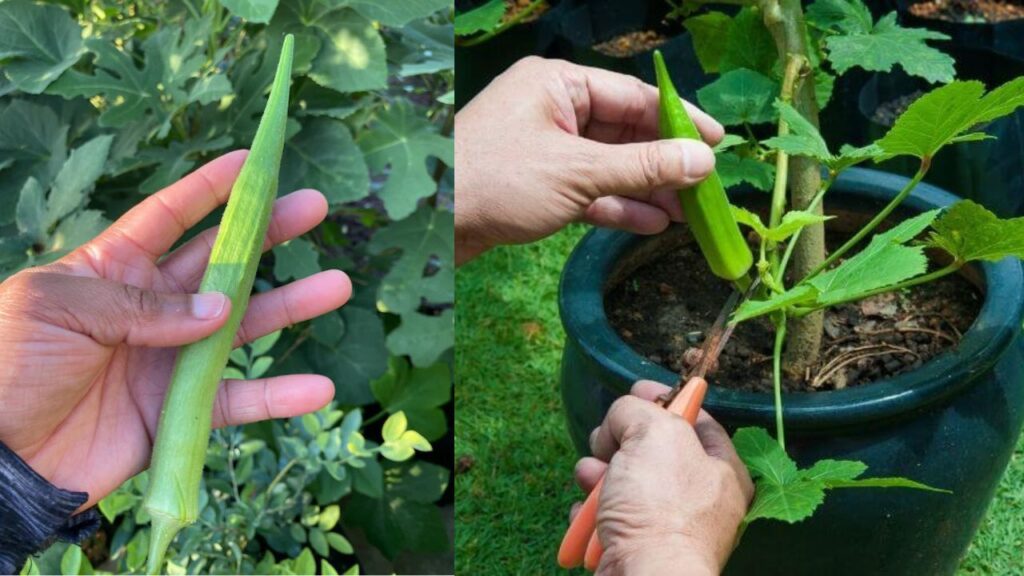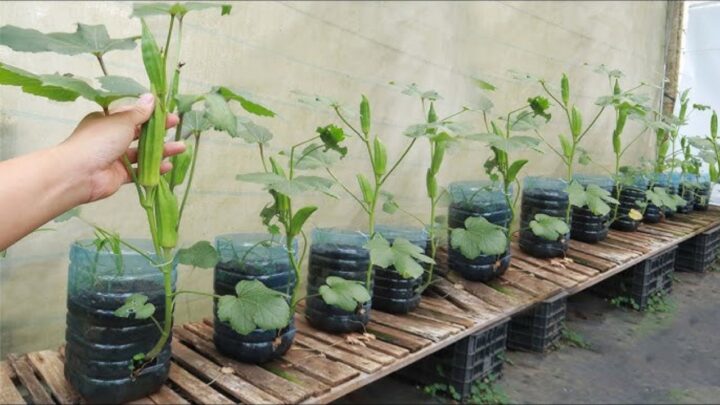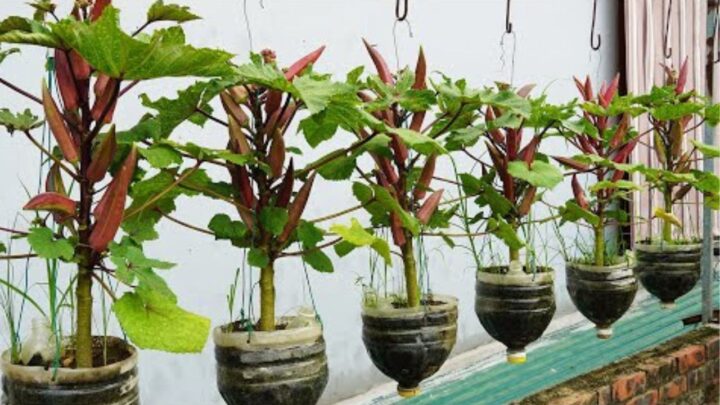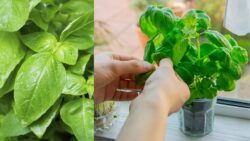Grow Okra on a Small Balcony: Growing okra in limited space might sound impossible, but with the right technique, you can enjoy a fresh harvest even from your balcony. This guide reveals the secret trick that gardeners swear by to get tall, healthy okra plants with minimal effort.

Why Growing Okra on a Balcony Is Totally Possible
Okra, also known as lady’s finger, thrives in warm and sunny conditions — which means your small balcony is perfect if it gets 5–6 hours of sunlight daily. With modern gardening methods and a few smart hacks, you don’t need a backyard to enjoy homegrown produce. Using containers, organic soil mix, and vertical growth techniques, balcony okra gardening becomes fun, easy, and surprisingly productive.
The Secret Trick: Deep Containers with Vertical Support
The secret to balcony okra success lies in using a deep container (at least 12–14 inches) combined with vertical staking. This encourages the plant to develop a strong root system and tall, productive stems. Most beginners underestimate okra’s root depth — but giving it enough space below and support above allows multiple pods to grow without breaking. Bamboo sticks or trellises work wonderfully to keep the plants upright and well-aerated.
Step-by-Step Guide to Growing Okra on a Balcony
- Choose the Right Container
Select a pot or grow bag that is at least 12 inches deep and 10 inches wide. Okra roots grow long, so a deep container helps prevent root binding and ensures healthy growth. Always pick containers with drainage holes to avoid water stagnation, which can cause root rot. Plastic, clay, or fabric grow bags are all suitable choices for small spaces.

- Prepare a Nutrient-Rich Soil Mix
Mix garden soil, compost, and coco peat in equal proportions. This ensures your okra plants get proper aeration, moisture retention, and nutrition. Add a handful of neem cake powder or organic fertilizer to prevent pests and support steady plant development. Avoid using garden soil alone — it becomes compact and prevents roots from spreading properly.

- Sow Seeds the Right Way
Soak okra seeds in warm water for 8–10 hours before planting. This softens the seed coat and speeds up germination. Sow the seeds about ½ inch deep and cover them lightly with soil. Water gently after sowing and keep the pot in a sunny area. Germination usually takes 5–7 days if conditions are warm.
- Maintain Sunlight and Watering Balance
Place the container where it receives at least 6 hours of direct sunlight daily. Okra loves heat but dislikes waterlogging, so water only when the top inch of soil feels dry. Overwatering can cause yellow leaves and fungal issues. During peak summer, watering once every two days is usually enough to keep your plant thriving.
- Provide Support for Vertical Growth
Once your okra plant reaches 10–12 inches, insert bamboo sticks or a small trellis for support. Tie the plant loosely with soft string to help it grow upright. This step improves air circulation and light exposure, reducing the risk of disease. The vertical method also saves space and allows more plants to fit on your balcony.
- Harvesting and Ongoing Care
Okra pods are ready for harvest within 50–60 days of planting. Pick them when they are 3–4 inches long — tender and easy to cut. Harvest regularly to encourage continuous pod production. Remove any yellow leaves and add compost every 2–3 weeks to keep the plant strong and productive for months.
Extra Tips for Balcony Gardeners
- Use self-watering pots if you travel often — they prevent over-drying.
- Rotate containers every few days to ensure even sunlight.
- Spray a mild neem oil solution monthly to keep pests away naturally.
- Plant companion herbs like basil or mint nearby to repel insects.
FAQs
How much sunlight does okra need on a balcony?
Okra requires at least 5–6 hours of direct sunlight daily. If your balcony doesn’t receive full sun, consider using reflective surfaces or repositioning pots closer to the light source.
Can I grow okra from store-bought pods?
Yes, you can. Simply dry the seeds from mature pods and plant them once they’re completely hardened. However, hybrid store varieties might not produce well, so heirloom seeds are a better choice.
How often should I fertilize balcony okra?
Use a mild organic liquid fertilizer every two weeks or add compost monthly. Avoid heavy chemical fertilizers — they can cause excessive leaf growth but reduce fruiting.
What’s the best season to grow okra?
Okra grows best in warm seasons, typically from late spring to early fall. In tropical climates, you can grow it year-round as long as temperatures remain above 20°C (68°F).
Even if your space is tiny, remember that passion and consistency can turn any balcony into a thriving garden. Watching your okra plants rise tall and bloom is an incredibly rewarding experience — and it all starts with one small container and a little care. Start today, and enjoy the joy of harvesting your own fresh okra right from your balcony!





